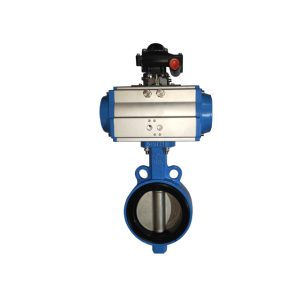Table of Contents
ToggleFaced with debris clogging up your fluid system? You reach for a strainer or filter to remove the gunk, but they seem so similar – what exactly sets them apart? We’ll strain out the key contrasts so you choose the best solution.
- Strainers screen larger particles, filters target smaller
- Flow direction different – strainers go before, filters after components
- Strainers simpler, easier to inspect – filters higher capture rate
- Select by particle size needed, flow rate and cleaning requirements
Our world is filled with contaminants both large and tiny. When these unwanted bits enter important equipment like industrial pumps, they can hamper performance and damage internal clearances machined to thousandths of an inch precision.
That’s where strainers and filters come in – barriers engineered to divert or capture crud to keep your fluids clean. But with two options, how to decide? Let’s tee up the critical differences.
Industrial Strainers – An Overview
What does an industrial strainer do? True to their name, strainers provide a perforated barrier that strains out larger debris when fluid first enters the system. They have a simple cage or mesh screen design mounted perpendicular to flow, diverting trash and particles too big to pass through. This protects downstream components.
Strainers handle high flows with large mesh openings for lower pressure drop. But the filtration accuracy is looser – they target bigger contaminants measured in millimeters or coarse microns.
Advantages:
- Lower cost and simplicity
- Handled high flows and heavy debris loads
- Allow easy visual inspection and cleaning
- Protect components from large damaging contaminants
Disadvantages:
- Limited filtration precision
- Require frequent cleaning when very dirty
- Permit smaller particles to pass downstream
Filters – An Overview
Filters pick up where strainers leave off, trapping finer debris missed upstream. Mounted after key components (parallel to the flow), filter media captures sub-micron particles that slip through the strainer.
Filters contain a tighter mesh packed with pleated material to grab these tiny contaminants. But the tradeoff is the increased pressure drop and slower flow requiring more filter surface area.
Advantages:
- Achieve precise sub-micron filtration below 10 microns
- Trap and retain very fine contaminants
- Enhance fluid cleanliness and system performance
- Protect close-tolerance clearances from abrasives
Disadvantages:
- Higher cost than strainers
- Greater pressure drop and lower flow capacity per element
- Difficult to inspect or clean internally
- Require more frequent replacement vs cleaning
Strainer Vs Filter – Key Differences
As you can see, both strainers and filters have their own pros and cons. Here are a few key differences between both:
- Mesh Size and Filtration Accuracy
The most fundamental difference between these two vital fluid conditioning tools lies in the precision of contaminant removal. Strainers use larger perforations, typically measured in millimeters between holes or the micron rating of mesh sheets.
Filters possess much tighter mesh or fiber wound media targeting sub-micron bits measured in microns (μm) or even fractions of microns. Filters can achieve precise particle capture down below 10 microns with high efficiency filtration models.
- Mounting and Flow Orientation
Flow direction relative to the strainer or filter orientation also contrasts. Strainers mount perpendicular to the upstream flow path, acting like a diverter gate to protect downstream components. They take the main fluid impact head-on across their entire screen area.
Filters connect in line with flow direction, running liquid through rather than against their media. This parallel orientation maximizes media surface exposure while minimizing flow resistance.
- Inspection and Maintenance
The wide openings and simple construction of strainer baskets or screens make visual inspection and cleaning easy via high pressure water or steam. Strainers act as serviceable protective guards, taking the brunt of particle attacks.
Filters see much finer debris that requires replacement rather than cleaning. Their tighter construction leaves less room for inspection without disassembly. Filters serve as inner layer protectors trapping what strainers missed.
What To Consider When Choosing Industrial Strainer or filter?
So, which one is best for you? Should you go for a strainer or a filter? Well, here are a few things to consider:
- Contaminant Particle Size
The key factor is the target particle size and level of fluid cleanliness needed. Strainers remove larger particles that are usually visible with the naked eye. Filters when precise filtration below 10 microns[1] is critical. Multi-stage combos strain larger junk than filter fines.
- Flow Rate
Strainers handle high flow velocity without excess pressure drop. Filters trade off flow rate for contaminant holding capacity and filtration efficiency. Balance flow demands vs precision required. Consider multiple strainers for volume, additional filter surface area for fines capture.
- Ease of Maintenance
If dealing with extremely dirty fluids, frequent inspection and cleaning are necessities. Strainers better allow visual checking and cleaning without full disassembly. Filters deepest layers require replacement when spent. Choose respective maintenance needs.
- Cost Considerations
Strainers offer lower upfront cost but filters provide greater filtration value per dollar. Strainer cleaning Labor must be weighed against filter replacement parts expense. Typically strain upfront then add polishing filters as budgets allow.
- Environment Factors
Consider temperature, pressure, chemistry compatibility with media, moisture handling needs, vibration and more based on equipment application. Ensure chosen style handles expected conditions and achieves target particle capture given operating environs.
Conclusion
Keeping fluids free of problematic particulates prevents worlds of hurt for your hardworking equipment. Utilizing both strainers and filters in concert combines the best of protective screening and precision trapping. Now that you know the key contrasts, assess target contaminant sizes expected in your systems along with flow demands. This enables strategically incorporating the right combination to maintain performance.
For expert guidance tailoring a filtration package, contact Xintai Group. Our innovative strainer variations (from stainless steel basket strainers to Y strainers) handle the toughest debris challenges. Request a custom fluid conditioning consultation today.











